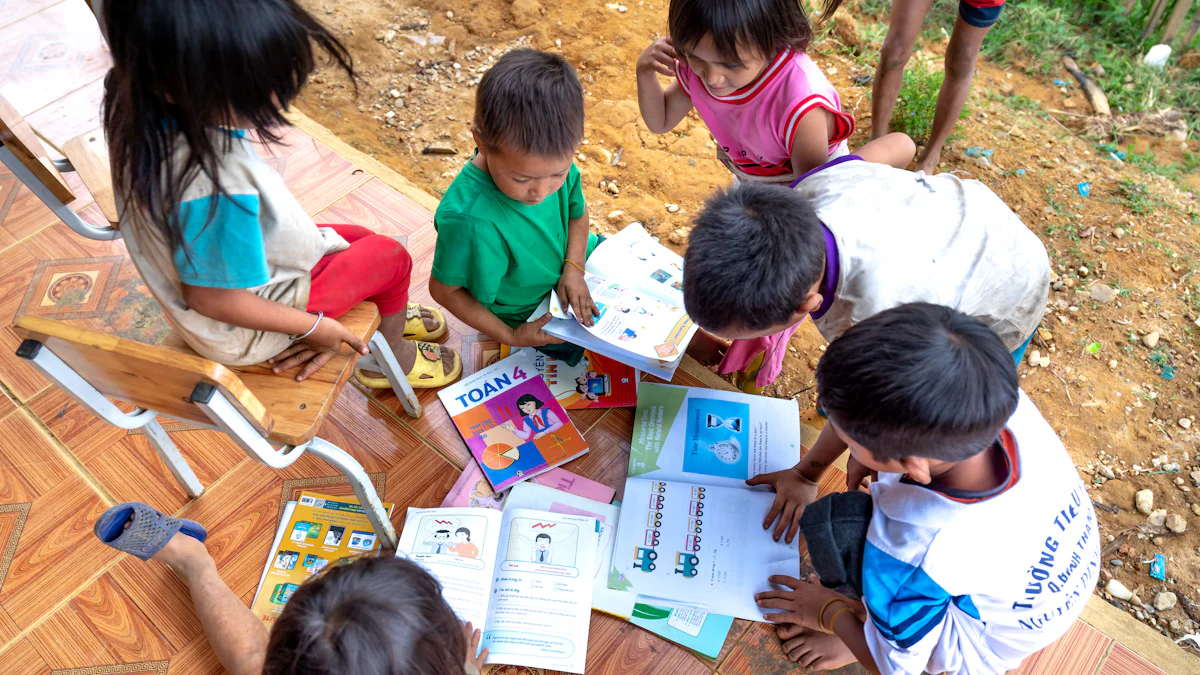15 Creative Ideas to Teach Kids About Financial Literacy

Teaching kids about money is one of the most valuable lessons a parent can offer. Early child financial literacy equips children with essential skills like budgeting, saving, and making informed decisions. These lessons foster responsibility and discipline, helping children develop healthy money habits. At Suited Tutor, we believe financial literacy empowers families and prepares children for real-world challenges. By starting early, parents can break the cycle of financial illiteracy and nurture confident, money-smart individuals.
Make learning about money a fun family activity and watch your child’s financial awareness grow. For those interested in enhancing their knowledge further, consider exploring Suited Tutor Courses, tuning into the Suited Tutor Podcast, to have the brilliant chance to get featured on our podcast episodes or even looking for opportunities in our Suited Tutor Careers site, to inspire the next generation of financial educators' literally speaking, sky is your limit.
Key Takeaways
Begin teaching about money early. Use clear jars to show savings.
Make learning fun with play. Create pretend shops or play games to teach about money.
Teach saving for goals. Help kids save for things they want to make it fun and satisfying.
Teaching Preschoolers the Basics of Money

Use a Clear Jar to Teach Saving
I find that using a clear jar is one of the simplest ways to introduce saving money to preschoolers. Unlike a traditional piggy bank, a transparent jar allows children to see their savings grow. Each time they add coins or notes, they can visually track their progress. This tangible experience makes the concept of saving more relatable. I encourage parents to label the jar with a specific goal, like a toy or a book, to teach children about goal-oriented saving. This method also introduces the idea of delayed gratification, as they learn to wait and save for something they want.
Introduce Coins and Notes Through Play
Play is a powerful tool for teaching kids about money. I often suggest setting up a pretend shop at home. Use real coins and notes or toy money to make the experience interactive. Children can practise counting coins, learning that more coins equal more value. This activity also helps them understand the value of exchange, as they "buy" items from the shop. Another fun idea is to sort coins by size or colour, which builds their familiarity with different denominations. These playful activities make financial literacy engaging and age-appropriate.
Read Storybooks About Money
Storybooks are an excellent way to introduce financial concepts to young children. I recommend choosing books where characters earn, save, or spend money. Stories like these simplify complex ideas and make them relatable. For example, a tale about a character saving for a bicycle can inspire children to set their own savings goals. Reading together also opens up opportunities for discussions about money. You can ask questions like, "What would you save for?" or "Why is it important to save?" This approach combines learning with bonding time, making it both educational and enjoyable.
Creative Ways to Teach Primary School Kids About Money
Set Up a Chore-and-Reward System
I find that a chore-and-reward system is an excellent way to teach children about earning money. Assigning age-appropriate tasks, such as tidying their room or helping with dishes, helps them understand the value of work. For each completed chore, I recommend offering a small reward, like coins or tokens. This system introduces the concept of earning and builds a sense of responsibility. To make it more engaging, I suggest creating a chart where they can track their progress and rewards. Over time, this method helps children connect effort with financial gain, laying the foundation for good money habits.
Play Board Games That Teach Financial Skills
Board games are a fun and interactive way to introduce financial literacy. Games like Monopoly or The Game of Life teach budgeting, saving, and decision-making in a safe environment. I’ve noticed that children enjoy the competitive aspect while unknowingly learning essential skills. These games also encourage critical thinking as players decide how to spend or save their resources. For younger kids, simpler games like Budgeting Adventure can help them prioritise expenses. By playing together as a family, you can make teaching kids about money an enjoyable bonding experience.
Open a Savings Account for Your Child
Opening a savings account is a practical step in a child's financial literacy. I recommend taking your child to the bank to open their account, which makes the experience memorable. Regularly depositing their earnings teaches them the importance of saving and introduces them to concepts like interest rates. Watching their balance grow gives them a sense of achievement and encourages goal-setting. For example, they might save for a new toy or a special outing. This hands-on approach empowers children to make informed financial decisions and prepares them for future responsibilities.
Use Shopping Trips to Teach Budgeting
Shopping trips offer a real-world opportunity to teach budgeting. Before heading out, I suggest giving your child a small amount of money and helping them create a list of items they want to buy. This activity teaches them to prioritise their spending and stick to a budget. While shopping, encourage them to compare prices and consider alternatives. For instance, they might choose a less expensive snack to save money for something else. These experiences make financial concepts tangible and help children develop smart spending habits.
Building Financial Awareness in Pre-Teens
Teach Budgeting with Pocket Money
I believe pocket money is a fantastic tool for teaching pre-teens about budgeting. By giving them a set amount each week or month, you can help them understand the importance of planning their spending. I suggest encouraging them to divide their money into categories, such as saving, spending, and giving. This approach introduces them to budgeting basics and teaches them to prioritise their needs. For example, they might allocate a portion for snacks, another for saving money towards a new gadget, and a small amount for charity. These habits build a sense of responsibility and prepare them for real-world money management.
Explain Needs vs Wants
Helping children differentiate between needs and wants is a crucial step in building financial awareness. I often start by discussing everyday examples. For instance, food and school supplies are needs, while video games and designer trainers are wants. You can make this lesson interactive by asking them to list items they plan to buy and categorise them. This activity helps them understand the value of money and encourages smarter spending choices. Over time, they’ll learn to prioritise needs over wants, which is a key skill for managing finances effectively.
Encourage Goal-Oriented Saving
Setting savings goals is an excellent way to motivate pre-teens to save. I recommend asking them to think about something they really want, like a new bike or a day out with friends. Once they’ve chosen a goal, help them calculate how much they need to save and how long it will take. This process teaches them the power of saving and delayed gratification. It also makes saving more exciting, as they can track their progress and celebrate when they reach their goal. These small victories reinforce positive money habits and build their confidence in managing finances.
Use Apps to Track Spending
Technology can make financial literacy more engaging for pre-teens. I often suggest using apps designed for their age group to track spending and learn about money management. Apps like RoosterMoney and Famzoo allow children to monitor their allowances, set savings goals, and even manage virtual chores. For those interested in learning about investing, Investmate offers beginner-friendly lessons. These tools make financial concepts more accessible and interactive. By using apps, pre-teens can develop a better understanding of their spending habits and take greater responsibility for their finances.
Preparing Teenagers for Financial Independence

Teach Earning Through Part-Time Jobs
I believe part-time jobs are an excellent way for teenagers to learn about earning money. When they work, they gain a sense of independence and responsibility. I often encourage teenagers to review their paychecks carefully. This helps them understand gross pay, net pay, and deductions like taxes. Managing earnings from jobs also teaches them to budget effectively. For example, they can allocate a portion of their income to savings, spending, and future goals. These experiences prepare them for the financial realities of adulthood while building strong money habits.
Discuss Credit and Debt Basics
Teenagers need to understand credit and debt before they encounter them in real life. I like to start by explaining how credit scores work and why they matter. For instance, a good credit score can help them secure loans or rent a flat in the future. I also discuss the risks of debt, such as high interest rates and late payment penalties. Teaching them to use credit responsibly ensures they avoid common pitfalls. By introducing these concepts early, I help them build a solid foundation for financial independence.
Involve Them in Family Budget Planning
Involving teenagers in family budget planning is a practical way to teach financial skills. I suggest sitting down with them to list income and expenses. This activity shows them how to create a simple budget and track spending. For example, they can see how much money goes towards groceries, bills, or savings. This process builds their understanding of financial priorities and accountability. Over time, they learn to make informed decisions about their own finances. It’s a hands-on approach that prepares them for managing their money in the future.
Encourage Planning for Big Purchases
Planning for big purchases teaches teenagers the value of research and comparison. I recommend starting with a practical example, like choosing a mobile phone plan. Together, we outline their needs and compare options to find the best deal. For larger items, such as a car, I suggest discussing the costs of buying, financing, or leasing. Creating a chart to compare these options makes the process clearer. These exercises help teenagers develop critical thinking and budgeting skills. They also learn to delay gratification, which is essential for long-term financial success.
Teaching financial literacy to children at every stage of their development lays the foundation for lifelong success. I suggest starting with simple steps like explaining money basics, using a piggy bank, or incorporating games. Parents can build on these lessons over time, making financial concepts relatable. Early habits create confident, money-smart individuals.
FAQ
What is the best age to start teaching financial literacy?
I would recommend starting as early as three years old. At this age, children can grasp basic money concepts like saving and spending through simple, fun activities.
How can I make financial lessons engaging for my child?
I suggest using games, storybooks, or real-life scenarios like shopping trips. These methods make learning interactive and help children connect financial concepts to everyday life.
Should I give my child an allowance?
Yes, I believe allowances teach responsibility. Tie them to chores or tasks, and encourage saving a portion. This approach helps children understand the value of earning money.
See Also
Five Effective Tutoring Strategies Demonstrated Through Real Examples
Creative Educational Approaches: Innovative Teaching Strategies for 2024
Engaging Learning Experiences: Transforming Education into Fun Adventures
Encouraging a Growth Mindset in Students for Enhanced Learning
Developing Student-Focused Learning Environments for Enjoyable Education

